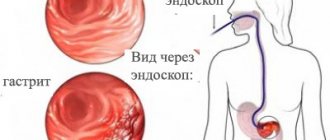What causes anuria
The pathology is caused by impaired functioning of the renal system. Depending on the specific causes of anuria, several types are distinguished.
- Arenal - occurs in the absence of kidneys (congenital pathology or a consequence of organ removal).
- Prerenal - develops as a result of shock, blockage of renal vessels, hemolysis.
- Renal - observed in diseases and damage to the kidneys: glomerulo- and pyelonephritis, blood transfusion shock, sepsis, LDS (long-term compression syndrome).
- Postrenal - occurs when the outflow of urine from the kidneys is impaired due to stones, tumors, scars, or uric acid crisis.
Risk factors
A high risk of developing anuria occurs with renal failure, collapse, ingestion of nephrotoxic substances, surgical interventions on the genitourinary system, and systemic autoimmune diseases.
Complications
Anuria is a sign of a serious pathology of the excretory function of the kidneys. If it is not quickly restored, general intoxication of the body and hemolytic-uremic syndrome develop.
Severe uremia is deadly. It negatively affects the brain, which is accompanied by the appearance of symptoms of neurological disorders: severe weakness, drowsiness, confusion, convulsions. If the patient's condition is not corrected at this stage, renal failure and uremic coma occur, which in most cases ends in death. If the patient does recover from the coma, he is left with a neurological deficit that cannot be completely eliminated, i.e. the person essentially remains disabled.
Symptoms and clinical picture of anuria
The symptoms of anuria largely depend on the cause of the condition. With a-, pre- and renal anuria, the patient’s general condition is slightly disturbed due to the compensatory function. From the 3rd day, uremic signs of anuria appear: acidosis, thirst, nausea, and possible vomiting. From the 6th day, the clinic of central nervous system damage begins: increased drowsiness, delirium, coma. Due to increased potassium levels in the blood, cardiac disorders occur.
Postrenal uremia is quite rare and at the same time one of the most severe pathologies. In the vast majority of cases, surgery is required.
How to identify signs of difficulty urinating?
Difficulty urinating is one of the common signs of pathologies of the urinary system. Although this symptom is more common in men, women should also be alert to signs of urinary obstruction.
From a medical point of view, this disorder is included in the concept of “dysuria”. Dysuric syndrome combines any urinary disorder. As a rule, such a clinical picture indicates diseases of the lower parts of the urinary system, but the infection in women spreads with such speed that a few days can become decisive, and simple inflammation can develop into a serious infectious disease.
If you suspect problems with urine output, you can compare your situation with normal indicators of the functioning of the urinary organs.
It has been proven that a healthy body excretes on average about 75% of the ingested fluid per day through the kidneys, that is, a person excretes approximately 1.5 liters of daily urine (the norm is 2 liters of fluid per day).
The frequency of urination during the day for women is from 4 to 9 times a day, and at night there should be no more than one trip to the toilet. If during the day the number of visits to the ladies' room sharply decreases, difficulties arise when urinating, and after this process there remains a feeling of a full bladder, you need to contact a specialist to solve such problems.
It's time to see a doctor if you experience:
- weakening of the force of the stream during urination;
- feeling of lethargy or thinning of the stream;
- urine dripping;
- pain during urination;
- the need for constant straining when passing urine;
- feeling of incomplete emptying of the bladder.
Diagnosis of anuria
First of all, you should find out what specific condition the patient has - urinary retention or anuria, since emergency care and treatment differ significantly.
During the interview, it is necessary to clarify whether the patient wants to urinate, whether there is a feeling of fullness in the bladder. To make a diagnosis, excretory urography is required. During the study, urine is contrasted in the renal cavity or is not visualized at all, which confirms the presence of anuria.
Diagnostic methods
It is recommended to conduct a number of additional studies to clarify the cause of this condition.
Additional methods for diagnosing anuria:
- Ultrasound of the urinary system;
- Abdominal CT scan;
- general blood analysis;
- blood chemistry;
- cystoscopy.
Urine tests for anuria are not performed due to the lack of material for research.
Popular questions about Anuria
How does anuria manifest?
The main symptom is lack of urination even with normal water consumption. After 2-3 days, uremic signs develop - loss of appetite, severe thirst, dry mouth, bowel disorders, headache, nausea.
How to diagnose anuria yourself?
Anuria has the same symptoms as acute urinary retention; it is impossible to independently differentiate these conditions. Only a doctor can make a diagnosis.
Is it possible to recover from a disease?
Certainly. To do this, you need to eliminate the cause of its occurrence.
Treatment regimen for anuria
For successful treatment of anuria, it is necessary to ensure the outflow of urine from the body and carry out intoxication measures.
Basic treatment methods and contraindications
The main method of treating pathology is bilateral drainage of the upper urinary tract. To do this, catheterize the ureters or install a nephrostomy. If urine is present in the drains, we are talking about postrenal anuria.
In extreme cases, when choosing how to treat anuria, uretero- or pyelotomy and hemodialysis are used.
Diagnosis and differential diagnosis
The diagnosis is made based on the absence of urine in the bladder (determined by catheterization) and signs of uremic intoxication. It is necessary to differentiate anuria from acute urinary retention, in which signs of renal failure may also be observed. In the differential diagnosis of various types of anuria, anamnesis is of great importance (poisoning, diseases that contribute to the occurrence of anuria, the presence of pain in the lumbar region), which allows us to decide on its form (renal, subrenal, etc.). If there is at least a small amount of urine (10-30 ml), its examination makes it possible to determine the cause of anuria (hemoglobin clumps in hemolytic shock, myoglobin in crush syndrome, etc.).
For differential diagnosis of subrenal anuria, it is necessary to resort to instrumental and radiological research methods. Ureteral catheterization helps make the correct diagnosis. The release of copious amounts of urine through a catheter inserted into the pelvis, or the detection of an obstruction in both ureters, indicates subrenal (excretory, obstructive) anuria. If the catheters can be inserted freely to a height of 30-32 cm and urine is not released through them, this indicates a prerenal or renal form of anuria.
Catheterization of the ureters should be combined with plain radiography, and, if necessary, with retrograde pyeloureterography after the introduction of 3-5 ml of radiopaque contrast agent through the catheter. The absence of changes in the pyeloureterogram excludes subrenal anuria.
Forecast
Modern technologies and advanced techniques used in our clinic guarantee favorable prognoses in the vast majority of cases of treatment of urinary retention.
In our center, ischuria is successfully treated - effective and timely treatment aimed at eliminating its causes gives positive results, and relapses of the pathology practically do not occur.
If you are alerted by the first alarming symptoms, do not waste time: call us, make an appointment - our doctors are always ready to help you!
Prevention
Prevention of the development of ischuria is timely diagnosis and elimination of its causes.
To prevent the development of the disorder, contact a specialist at the first symptoms.
For the purpose of prevention, it is advisable for men over 45 years of age to undergo an examination by a urologist annually, as well as a urine test and ultrasound of the genitourinary organs.
The risk group also includes women who have given birth and had abortions many times, and those representatives of the fairer sex who have undergone gynecological operations or suffer from diseases of the pelvic organs. These women should also visit a urologist once a year.
Other causes of difficulty urinating in women
In addition to common diseases of the genitourinary system, there are a number of diseases that can manifest themselves in a number of problems with urination. These include:
- gout – during the disease, uric acid salts accumulate, the renal apparatus is often affected;
- complications of inflammatory processes of any localization - the spread of infection within the body can lead to secondary inflammation of the genitourinary system;
- storage diseases - metabolic disorders lead to changes in the normal functioning of the urinary system;
- diabetes mellitus – diabetic nephropathy often accompanies the disease and leads to the development of a number of unpleasant symptoms, including disturbances in bladder emptying;
- psychosomatic manifestations - in some cases, problems of the genitourinary system are associated with severe stress.
FAQ
After ejaculation I want to pee, but I can’t. This is fine?
— During an erection, it is normally difficult to urinate. If the erection has passed, but it is still difficult to urinate, it is worth dealing with this in person.
Over the past two years, a not very pleasant problem has appeared. Two or three times during this period, before menstruation there is urinary retention and obvious swelling under the eyes. With menstruation, a lot of fluid is released. What needs to be examined and what is the reason?
- This is how premenstrual syndrome manifests itself. If these symptoms cause concern, then you can take diuretics on such days.
Ask a Question
Diagnostic measures
To make a correct diagnosis, doctors need to carefully collect all complaints: determine the characteristics of urinary dysfunction, the frequency of occurrence and severity of symptoms. The specialist will also find out the history of the disease. It is important for him to know when the complaints first appeared, what could have caused the development of the pathology, and whether there is a connection between changes in the functioning of the genitourinary system and other diseases.
An objective examination in women includes examination of the lumbar region and pelvic organs, external genitalia, including by a gynecologist. During the examination, the doctor evaluates Pasternatsky's symptom - tapping on the lower back in the area of the projection of the kidneys to determine kidney diseases.
Patients must take a smear from the urethra to check for inflammatory diseases of the lower urinary tract. In addition, standard clinical blood and urine tests are prescribed, as well as additional studies to assess renal function and the content of pathogenic microflora. Such tests include determining the amount of daily urine, samples to assess the composition of urine, bacteriological culture to identify the sensitivity of pathogenic microorganisms to various antibiotics.
Among instrumental diagnostic methods, an important role is played by ultrasound of the kidneys and pelvic organs, as well as more detailed visualization of problem areas of the genitourinary system - CT and MRI.
If necessary, psychotherapeutic counseling is carried out: some disorders of the genitourinary system may be the result of psychological problems.









